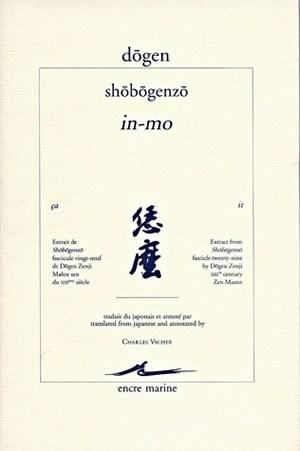
Serie : Shôbôgenzô
Paru le 06/04/2005 | Broché 179 pages
Public motivé
traduit du japonais et annoté par Charles Vacher
Tout au long de son grand traité d'athéologie, le Shõbõgenzõ, Dõgen (1200-1253) enseigne la vision juste. Voir juste c'est voir en cessant de voir ce qui n'est pas, c'est s'éveiller à la vraie nature des choses. La vraie nature des choses, le coeur, est sans qui, ni quoi, sans quand, ni où, calme et apaisée, vide.
Mais l'éveil à est une manière de dire. L'éveil ne s'obtient pas. L'éveil et l'homme et le mouvement de l'un vers l'autre sont des hypostases; aucun n'existe en soi, indépendamment de l'autre. Dõgen met en exergue le syllogisme du maître chan Yunju Daoying (?-902): l'homme, tout homme sans exception, est déjà l'éveil; l'éveil est déjà l'homme; donc il n'y a pas à se soucier d'obtenir l'éveil. Cette voie sans trajet, de plain-pied avec l'éveil, s'appelle tout simplement ça.
Si c'est la pensée sans compromission de Nãgãrjuna, le fondateur de la tradition du bouddhisme Mãdhyamaka, qui constitue l'ossature du Shõbõgenzõ, c'est la patrologie chan de l'époque Tang qui fait office de matériau, un matériau souple et malléable, indispensable à l'expression de l'audacieuse méthode exégétique de son auteur. Les mots y sont considérés non pas comme sacrés, mais comme le filet qu'on jette après avoir attrapé sa proie.
Throughout his treatise of atheology, the Shõbõgenzõ, Dõgen (1200-1253) teaches the right vision. To see right is to see while ceasing to see what is not, is to awaken to the true nature of things. The true nature of things, the heart, is without who, without what, without when, without where, calm and still, empty.
But awakening is just a manner of speech. Awakening is unobtainable. Awakening and the person and the movement of the one toward the other are hypostases. None of them have a separate existence. Dõgen puts in the syllogism of Yunju Daoying (?-902) as epigraph to his essay: all beings without exception are already awakening; awakening is already beings all beings without exception; there is no need to bother about attaining awakening. This way without a gap and without distance is called it.
While the uncompromising thought of Nãgãrjuna, the founder of the Mãdhyamaka Buddhist tradition, form the ossature of the Shõbõgenzõ, the Chan patrology of the Tang period provides its material, a supple and malleable material, indispensable to the audacious exegetical methodology of the author. Words are not considered as sacred, but as disposable like the fishnet that is thrown after the catch has been seized.